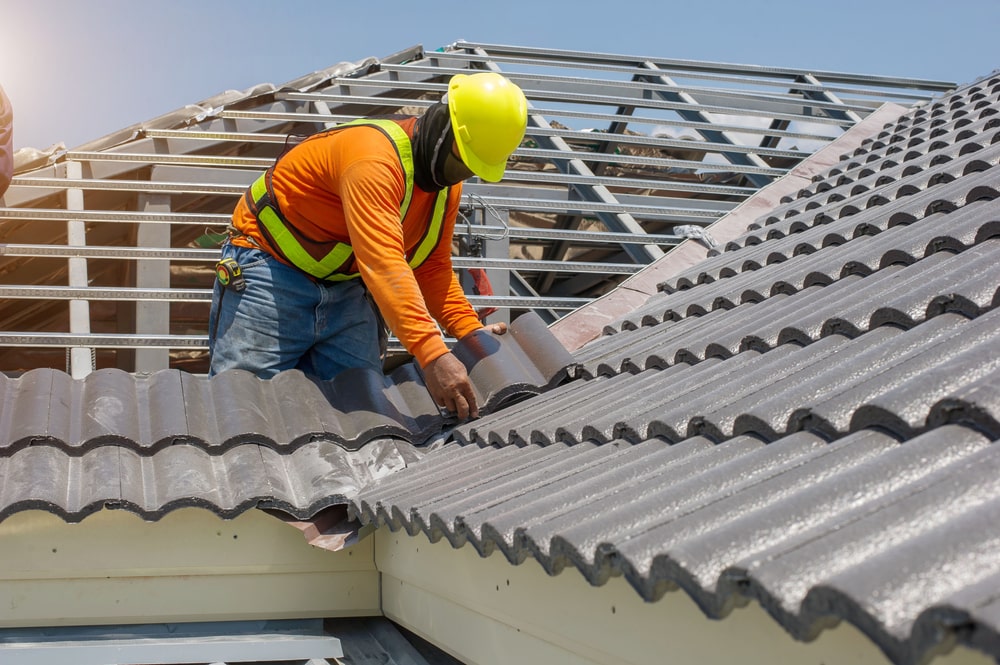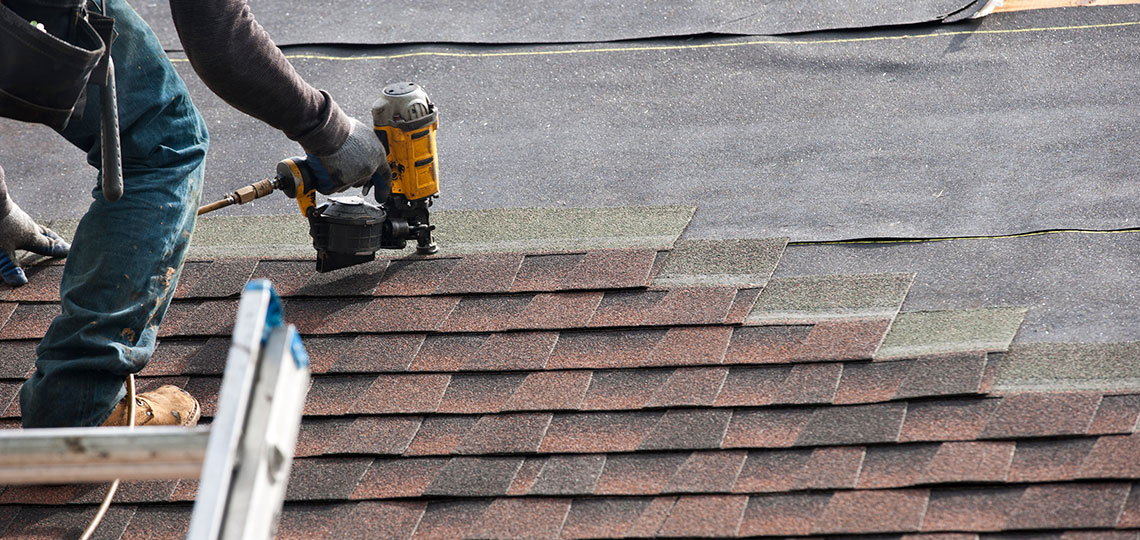Essential Concerns to Ask Gainesville Roofing Companies Before Working With
Best Practices for Ensuring Appropriate Roof Covering Air Flow
Ensuring appropriate roofing ventilation is critical for the long life and performance of a roofing system. A balanced intake and exhaust air vent ratio, commonly 1:300, plays a crucial role, with intake vents ideally put at the reduced side of the roofing system for great air access and exhaust vents at the height for warm air exit. Normal assessments to determine obstructions and maintain clear air movement are paramount. Moreover, maintaining insulation far from vents is crucial to stop air flow restriction. Comprehending these fundamental components sets the phase for even more comprehensive understandings into setup and upkeep methods that can substantially enhance your roof's performance.
Understand Ventilation Essentials
Properly understanding ventilation fundamentals is necessary for making sure the durability and effectiveness of roof covering systems. Effective ventilation reduces moisture buildup and temperature extremes in the attic, both of which can result in considerable architectural damages gradually. A well-ventilated roof covering aids in stopping usual issues such as mold growth, wood rot, and ice dams, which can compromise the stability of the roof covering materials and the underlying structures.
The key goal of ventilation is to assist in the motion of air, allowing for a constant exchange in between the interior and outdoor environments. This balance is achieved through a mix of consumption and exhaust vents that function with each other to maintain optimal airflow. Consumption vents, usually located along the eaves or soffits, enable fresh air to go into the attic room area, while exhaust vents, usually positioned at or near the roof covering ridge, make it possible for warm, humid air to get away.
Trick factors affecting the efficiency of roofing system air flow include proper placement, appropriate sizing, and making certain that both intake and exhaust vents are unblocked. Regular assessment and maintenance are vital to determine possible obstructions, damage, or inadequacies in the ventilation system, therefore guarding the roof's efficiency and toughness.
Sorts Of Roof Covering Vents
Roof covering vents play a critical duty in maintaining efficient attic ventilation and, by extension, the total wellness of the roof system. Numerous types of roofing vents are offered, each with one-of-a-kind benefits tailored to specific roof demands.

Soffit vents are installed under the eaves and work in tandem with roof vents to guarantee a well balanced intake and exhaust system. By enabling cooler air to enter from below, soffit vents facilitate the expulsion of hot air with upper vents. Gable vents, located on the outside walls of the attic, deal one more effective option, especially in homes with saddleback roofs.
Evaluate Your Existing Air Flow

Next, take into consideration the age and problem of your roof materials and air flow elements. Older systems may not follow present building ordinance or might have degraded gradually, decreasing their efficiency. Conduct a complete exam to determine any signs of deterioration, such as rust, damage, or gaps that might endanger the system's performance.
Furthermore, determine the attic room temperature and moisture levels. Heats and moisture can indicate inadequate ventilation - roofing companies gainesville florida. Use a hygrometer and thermostat to get accurate analyses, comparing them with outside problems. Consistent disparities suggest prospective concerns that need addressing.
Setup Best Practices
Efficient installment of roofing air flow systems is paramount for making sure optimum performance and longevity. Proper setup starts with recognizing the particular ventilation requirements of the structure and the roof it covers. This involves important link computing the appropriate ratio of intake to wear down vents, commonly sticking to the 1:300 rule, which stipulates one square foot of ventilation for every 300 square feet of attic room floor room.

The placement of vents is equally critical. Consumption vents must be installed at the roofing's reduced edge, usually in the soffits, to enable awesome air to go into. Exhaust vents, on the various other hand, ought to be mounted near or at the roof's height to facilitate the departure of cozy, damp air. This creates a natural air flow that assists maintain temperature and dampness equilibrium within the attic room.
Seal all air vent links meticulously to stop air leakages and prospective water infiltration. Use high-grade materials and adhere to supplier standards to ensure sturdiness and performance. Additionally, integrating ridge vents with baffles can dramatically improve airflow effectiveness by preventing wind-driven rain and snow from going into the attic.
Inevitably, precise installment of roofing ventilation systems reduces possible problems such as mold growth, ice dams, and structural damage, making certain the roofing system's stability and the structure's general wellness.
Normal Upkeep Tips
Consistency in upkeep methods is essential to making certain the long-lasting efficiency of roof covering air flow systems. During these inspections, make sure that vents are cost-free of debris, nests, and various other obstructions that might hamper airflow.
Cleansing the vents is an additional essential job. Use a soft brush or a vacuum cleaner to get rid of dust and debris from consumption and exhaust vents. Be cautious not to harm the vent displays or louvers throughout the procedure. Furthermore, evaluate the attic room for any kind of indications of water damages, which could compromise the integrity of the roof.
Correct insulation is equally crucial. Ensure that attic room insulation does not block the vents, as this can severely restrict airflow. If any kind of insulation has moved or worked out, reposition or change it to keep an effective barrier.
Finally, change any kind of harmed or missing components without delay. Damaged vents, cracked roof shingles, or tatty flashing can all contribute to insufficient air flow and ought to be dealt with immediately. Regular maintenance makes have a peek at these guys sure that the roof covering air flow system functions optimally, consequently extending the life expectancy of the roof covering itself.
Final Thought
Making sure appropriate roof air flow is paramount for keeping the read what he said performance and toughness of a roof. Adherence to the 1:300 intake and exhaust vent proportion, combined with the tactical placement of vents, is important. Regular semiannual evaluations, debris cleaning, and making certain insulation does not block air movement are crucial practices. Implementing these ideal methods will certainly foster a well-ventilated roof, consequently reducing potential issues related to moisture build-up and extreme warmth, ultimately lengthening the roofing system's life-span.
A well balanced intake and exhaust vent proportion, generally 1:300, plays a critical duty, with intake vents ideally placed at the lower side of the roof for amazing air entrance and exhaust vents at the top for warm air leave. Consumption vents, generally located along the soffits or eaves, permit fresh air to go into the attic room room, while exhaust vents, frequently situated at or near the roofing system ridge, make it possible for warm, moist air to get away.
Soffit vents are mounted under the eaves and work in tandem with roof vents to ensure a balanced intake and exhaust system. By enabling cooler air to get in from below, soffit vents help with the expulsion of warm air via top vents. Adherence to the 1:300 intake and exhaust air vent proportion, paired with the strategic placement of vents, is crucial.